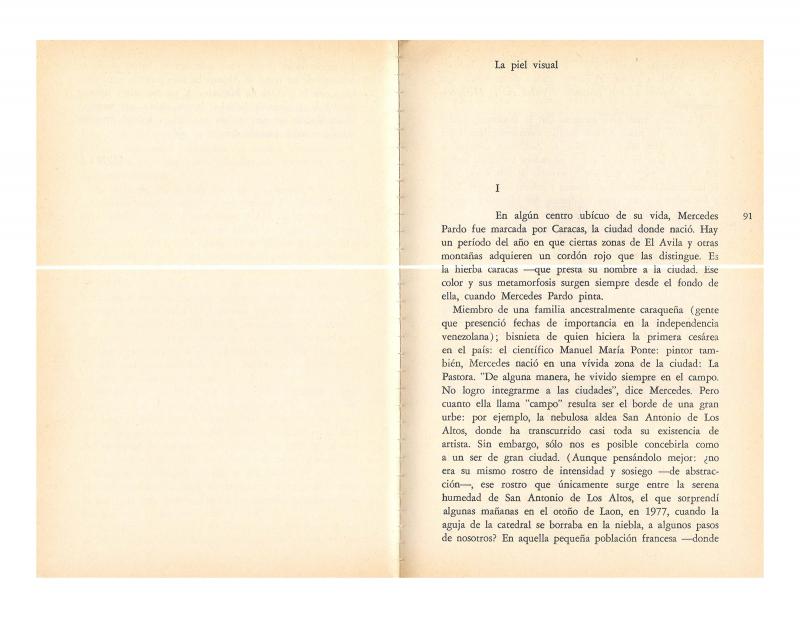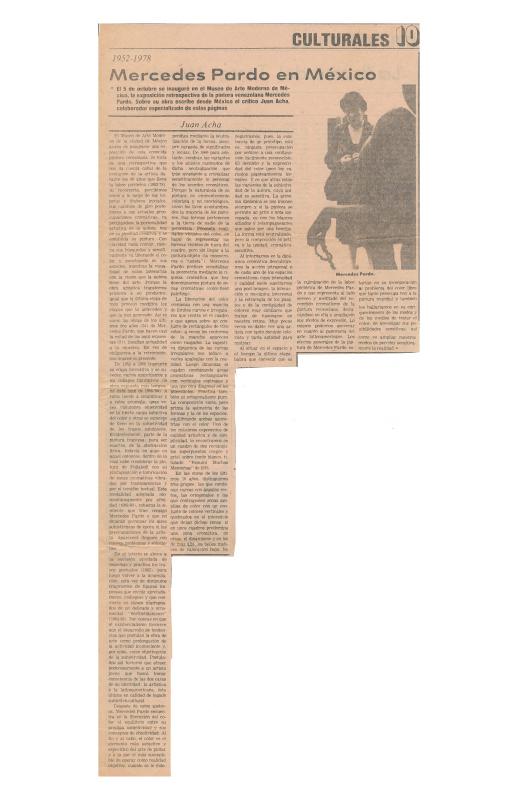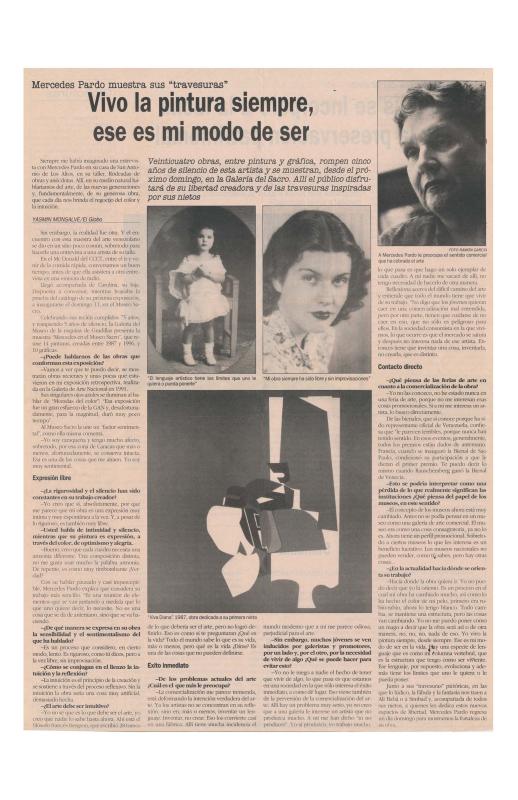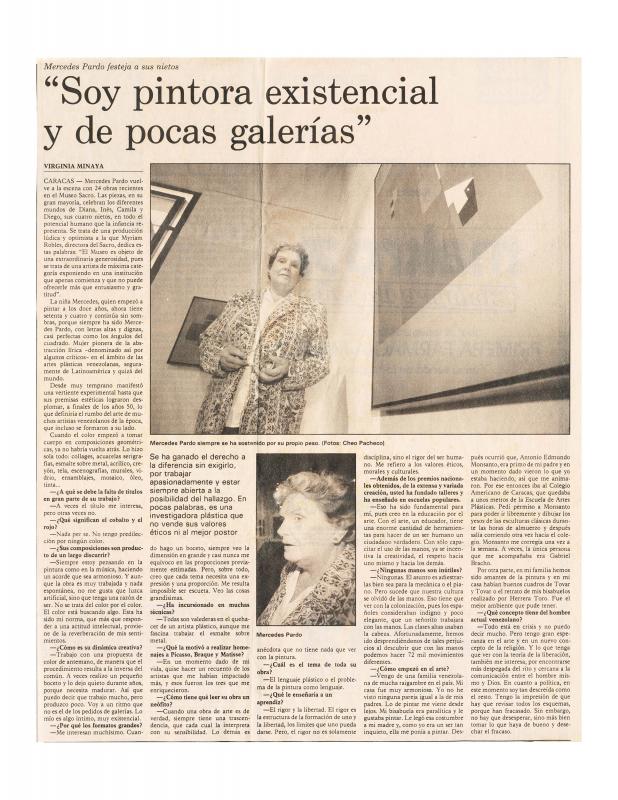El Nacional presents the text as a discussion of the 1978 exhibition of Mercedes Pardo (1921–2005) at the Museo de Arte “Contemporaneo” de México; however, it does not refer to this exhibition that was titled Exposición de la afamada pintora venezolana Mercedes Pardo: 50 óleos, acrílicos, collages y otras técnicas. In fact, their works were previously shown at the GAN (Galería de Arte Nacional) in Caracas as Del taller de Mercedes Pardo hoy (July/August 1978). Written by the Venezuelan writer and critic Jose Balza (b. 1939), “La Piel Visual” was republished in 1983 as a chapter of his book Análogo simultáneo (Caracas: GAN, 1983, doc. no. 1157222).
Balza’s text is divided into three sections. The first one is strictly biographical, about Pardo’s art education in Caracas under her uncle Antonio Edmundo Monsanto, founder of the Círculo de Bellas Artes, and cousin of Pardo’s father, undeniably, an influential educator for the generation of Venezuelan modernism forerunners. Besides Pardo, Monsanto had also taught Alejandro Otero, Mateo Manaure, Narciso Debourg, Héctor Poleo, Jesús Rafael Soto, and Carlos Cruz-Diez, among others. Balza stresses the influence of Pardo’s Parisian experience and education under the French Cubist André Lhote, implying that her transition to abstraction is due to his feedback on her 1949 production. In this initial part, Balza argues that Pardo’s artistic background is based in art knowledge despite her reiterations on perception itself. Other interviews demonstrate, however, how she often believed that spontaneous intuition is only the inception of her creative process, then followed by study through preparatory sketches before the proposal is considered final. The second section analyzes Pardo’s approach to color and structure with a mention of El Greco, Cézanne, and Picasso as her sources. Balza highlights the “domesticated energy” of Pardo’s work, alluding the combination and/or tension between rigor and freedom. The third part reflects on Pardo’s affective link to Caracas through the color red. As Balza initially explains, the “hierba caracas” (a common plant from the amaranth family in mountains surrounding the city) paints the orographic landscape in red. She has elsewhere explained that such a coloration doesn’t have a symbolic meaning in her art and has no preference for a color whatsoever.
[With regard to reviews on the Mexican venue, see in the ICAA Digital Archive: Fernando Gamboa, “Mercedes Pardo: Es poco cuanto se diga de su obra” (doc. no. 1331475); Bélgica Rodríguez, “Abstracción, Espacio y tiempo” (doc. no. 1331443); and Juan Acha, “Mercedes Pardo en México” (doc. no. 1331459). For further detail on the artist’s education and art production, see Gloria Carnevali, “El Espacio en la pintura de Mercedes Pardo” (doc. no. 1102285); and María Fernanda Palacios, “Pintura y vida” (doc. no. 1102253); moreover, on her creative process, see both Yasmin Monsalve, “Vivo la pintura siempre, ese es mi modo de ser” (doc. no. 1331036); and Virginia Minaya, “Soy pintora existencial y de pocas galerías” (doc. no. 1331020).]








